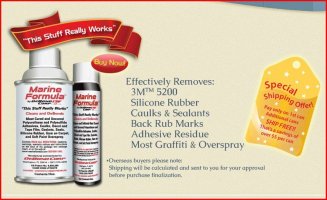The chain locker on my '91 Ericson 34 is a fiberglass pan fit through a hole cut into the deck and held there with screws and sealant.
I'm trying to remove it but scraping the old sealant from under the joint is taking forever and I'm damaging the gelcoat in the process.
Can anyone suggest a solvent to dissolve the sealant?
I'm concerned that if I use the wrong stuff it will leave a residue which will interfere with the new sealant adhering.
Thanks in advance!
I'm trying to remove it but scraping the old sealant from under the joint is taking forever and I'm damaging the gelcoat in the process.
Can anyone suggest a solvent to dissolve the sealant?
I'm concerned that if I use the wrong stuff it will leave a residue which will interfere with the new sealant adhering.
Thanks in advance!


